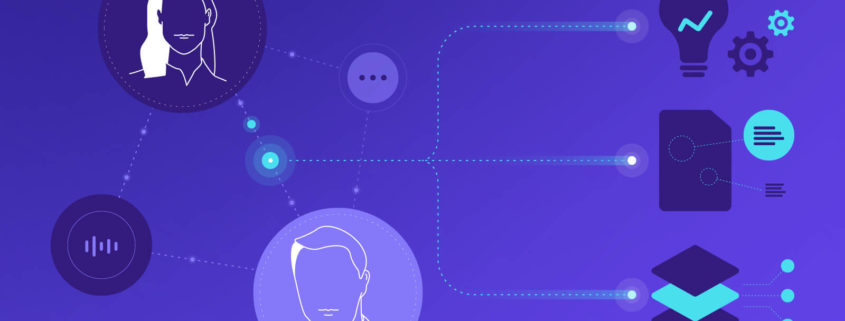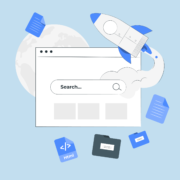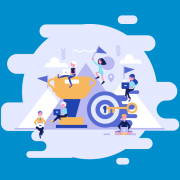6 Ways to Use Natural Language Processing to Improve Your Marketing
There is no denying that the business world is very competitive at the moment. The fact that 94 percent of businesses are investing in competitive intelligence tells you that companies are looking for every edge they can get.
One area whereby you can really gain an edge and set your business apart from the crowd is marketing. A good marketing campaign can make a difference when standing out from your competition.
However, what constitutes a good campaign at present? Well, one area that we would recommend looking into is Natural Language Processing. If you have never heard of this before or you are unsure of how you can use it to improve your marketing efforts, read on to discover more.
What is Natural Language Processing?
Before we take a look at how to use Natural Language Processing, we must first explain what it is. Natural Language Processing or NLP involves using artificial intelligence (AI) to give computers the ability to understand spoken words and text in the same manner humans do.
NLP brings together computational linguistics (rule-based modeling of the human language) with deep learning, machine learning, and statistical models.
When working together, these technologies give computers the ability to process human language in the form of voice or text data and to ‘understand’ the whole meaning, complete with the writer’s or speaker’s sentiment and intent.
NLP is being used to drive computer programs that summarize big quantities of text at a fast pace, respond to spoken demands, and translate text from one language to another.
There is a high chance you have already interacted with NLP in the form of customer service chatbots, speech-to-text dictation software, digital assistance, voice-operated GPS systems, and other consumer conveniences.
Nevertheless, NLPs also play an increasingly important role in enterprise solutions that are being used to simplify mission-critical company processes, enhance employee productivity and streamline business operations.
How can you boost your marketing with NLP?
Now that you have a good understanding of what NLP is and how it works, let’s take a look at six of the different ways you can capitalize on this to boost your marketing efforts:
1. You can use AI to boost your content efforts
The first use case of AI in marketing is to enhance your content marketing efforts. This concept is something that has been around for a few years now. However, the trouble is that the technology has not been sophisticated enough to produce the results required.
However, we are indeed making significant steps forward in this regard. Language generation models are being created that can effectively generate new pieces of content that are of a required standard.
Of course, this will not eliminate the need for content writers altogether. From proofreading the AI content itself to writing opinion pieces, there are areas of AI that cannot fulfil the same requirements a content writer does.
At the same time, AI solutions offer a level of speed and efficiency that is simply not possible when carried out by a human. So, it is likely that we will see both approaches blend together for the mutual benefit of content teams around the world.
2. Generate catchy ads with NLP
One area where a lot of people can struggle when it comes to adverts is with the heading or slogan. If you have been sitting at your desks for hours trying to come up with something unique and original, why not use an AI solution instead?
The recent text generation techniques can help marketers when it comes to generating optimized product listings, advertising slogans, keywords, and much more.
A good example of this is the AI copywriter that Alibaba has introduced. This carries out most of the drudge work when creating successful product descriptions.
We have seen that this tool is particularly popular with foreign businesses, enabling them to create product descriptions in different languages, such as Chinese. This is an excellent way fo scaling your business up and reaching a wider audience in a matter of minutes.
3. Automated summarization so you can identify trends early
If you want to gain an edge over the competition, you need to make sure that you’re doing things first. You need to spot trends before other businesses do so that you can act on them and reap the rewards.
One use of NLP in the marketing realm is with regard to the aggregation of relevant news. You can use cutting-edge summarization approaches to give you the power to extract relevant content about your brand online from a variety of data sources, from articles to news outlets.
According to Abigail See from Stanford University, automatic summarization that is NLP-centric has moved on in recent years. Gone are the days of simple extractive summarization, whereby content from the initial source was made shorter and rearranged.
Today, we are making the most of abstractive summarization. This means that summaries are being made up of generated content on the fly. We’re enjoying greater levels of accuracy and quicker speeds, and these are two trends that are only set to continue with regards to NLP and AI.
4. Understand your customers better with sentiment analysis
For many years, one of the drawbacks associated with AI was that people felt it could not understand the sentiment or intent behind what a person was saying. A great amount of time and resources have been put into improving this part of AI, and that is where NLP really thrives.
With the improvements that have been made and the NLP capabilities we can now enjoy, it has become possible for AI to extract the sentiment and intent behind the language.
You can use this to determine the sentiment of a conversation with an individual customer, and this can then be used to effectively steer the conversation toward a conversion.
There are a number of different use cases of sentiment analysis, including product analysis, competitive research, brand monitoring, and many more.
As more and more advancements are made in this area, it is only going to become more powerful, enabling brands to understand their customers better than they ever have done before.
5. Gain access to a broader audience with voice search
There have been a couple of barriers with regards to digital services, and one of them is that not everyone feels comfortable typing on a computer or similar device, or is able to do so.
Voice search, therefore, has become increasingly popular in recent times. This includes everything from voice-only speaker systems like Alexa to smartphones powered by Google Assistant or Siri.
At the moment, around 65 percent of those aged between 25 and 49-years-old speak to their smartphones at least once per day. Furthermore, over 50 percent of searchers online are predicted to be via voice within the next year.
Therefore, if you want to make sure your business is ahead of the trend, you really need to make sure that you are incorporating voice search into your marketing plans.
6. Capture leads and improve customer service with AI-powered chatbots
Last but not least, if you go onto any sort of business website at the moment, you will likely find some sort of pop-up box on the homepage so that you can easily type a question and get assistance if you require it.
There are even some options to have the likes of Facebook Messenger or another common chat service integrated into the website, acting as an autoresponder.
Some of the common platforms used in this sphere include the likes of Intercom and Drift, providing you with automated response solutions, which also give you the power to gather data on your website users.
At the moment, the issue with a lot of these chatbots is that they struggle beyond the basic questions and a brick wall is hit once the conversations become a little bit more complex. In which case, the user will typically be directed to a human support agent for further assistance.
While tehre are still improvements that need to be made in this sphere, there is no denying that AI-powered chatbots can help reduce the number of live agent queries, ensuring your support team are assisting those that really need it and do not have a simple question that could easily be answered without human assistance.
NLP is the future when it comes to modern-day marketing
As you can see, there are a number of different ways you can use Natural Langauge Processing to take your business to the next level. There is no denying that this is considered a go-to AI technology for modern-day marketers.
Applications range from conversational lead capture and content ad generation to trend identification and summarization.
As famously said by business and life coach Phi Dang, “…if you want to stand out from the competition and gain an edge, you need to understand how NLP works and how to best use it to your business’ benefit.”
















